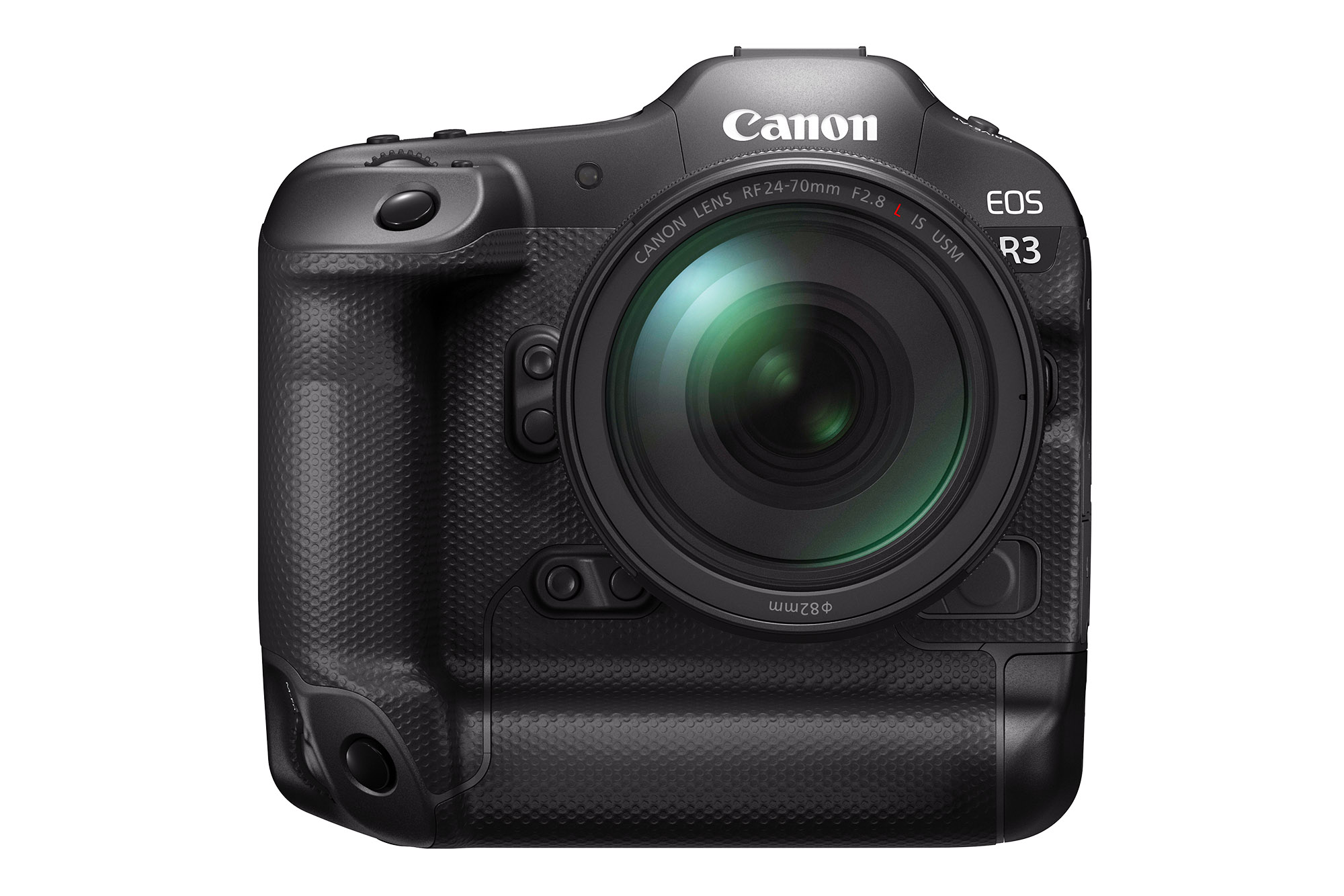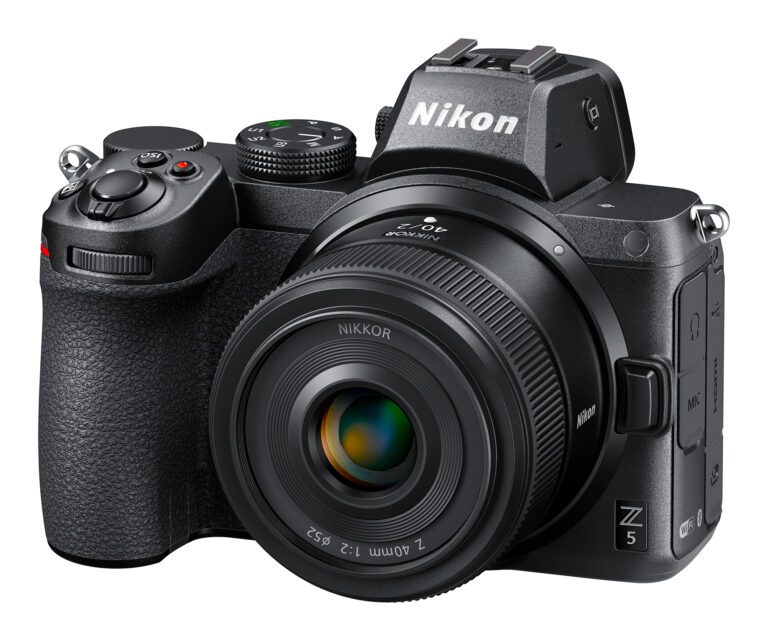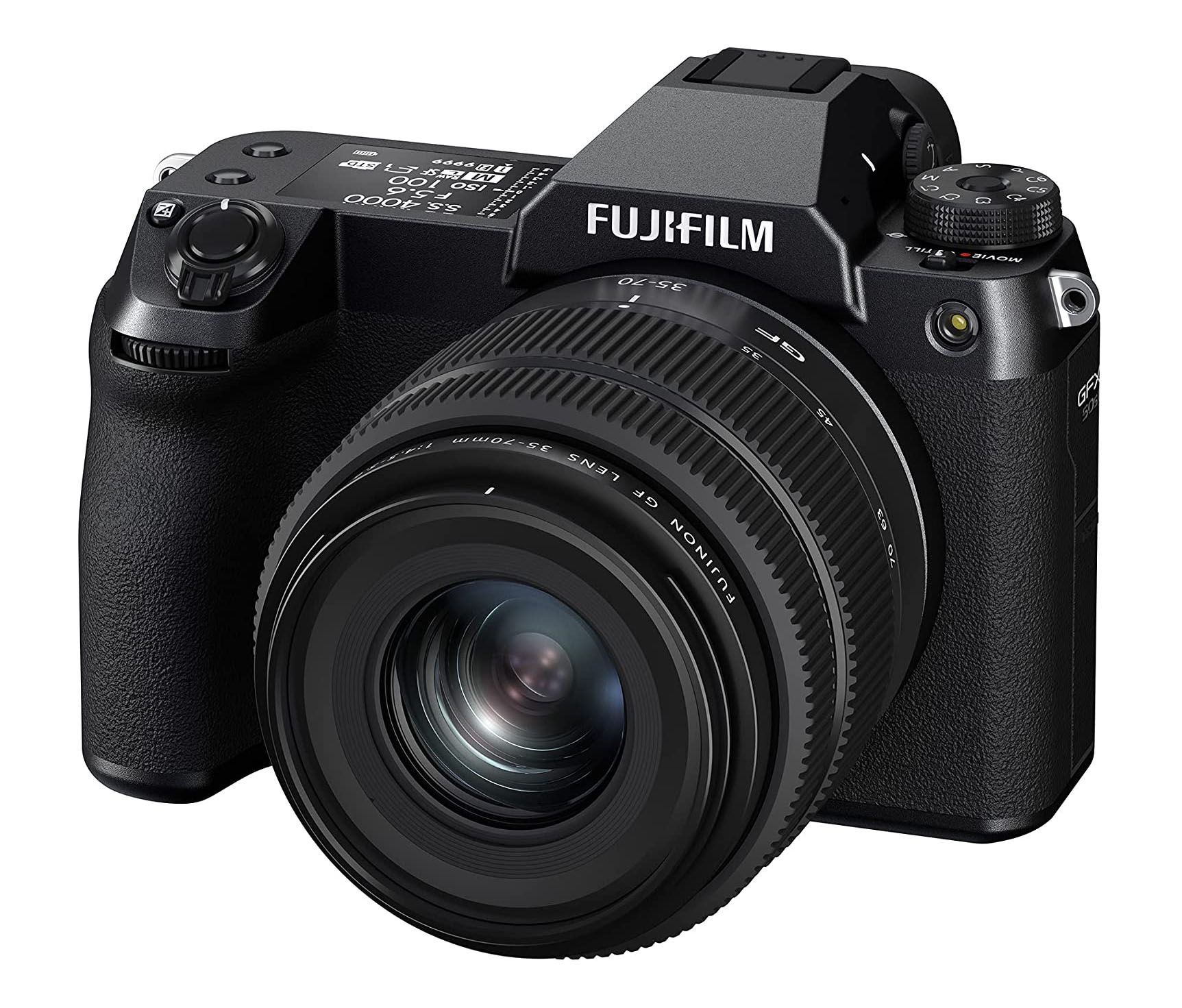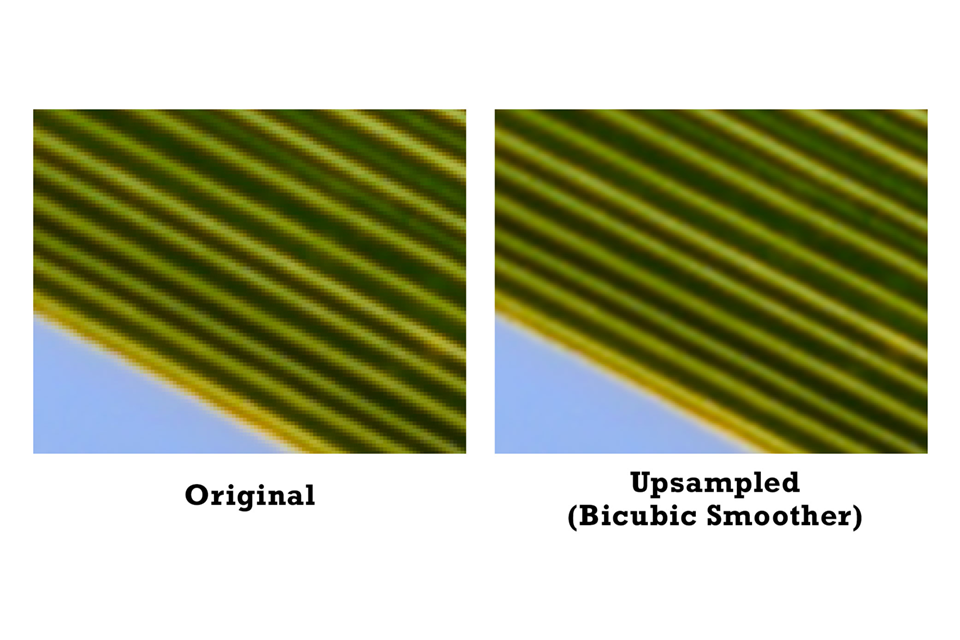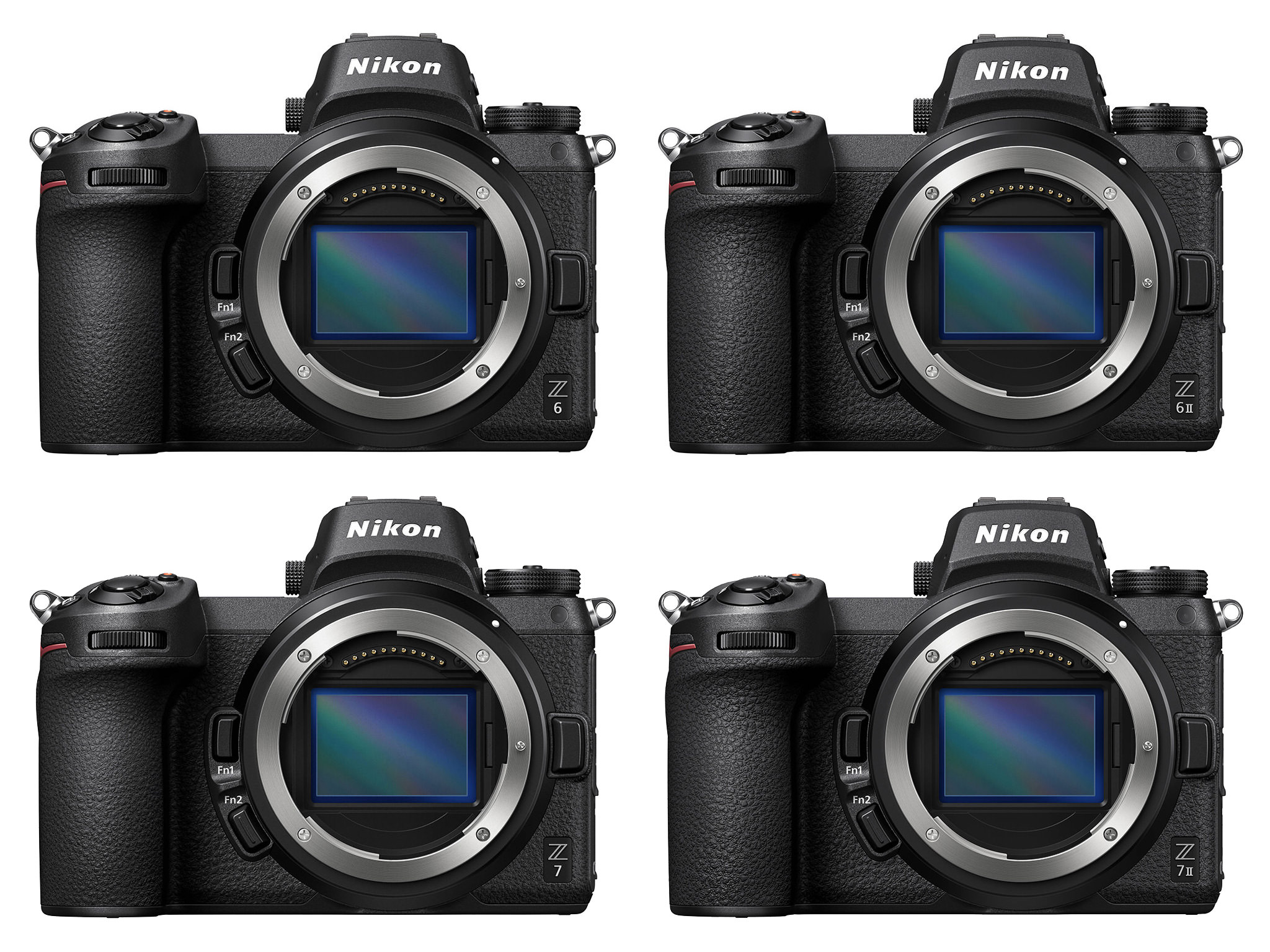
[ad_1]
If you’re using a Nikon Z camera, it’s important to check before buying any non-Z-series lenses to make sure they’re compatible with Nikon’s FTZ adapter. This comprehensive article goes into the compatibility of various Nikon and third-party lenses when using the FTZ adapter.
Although the FTZ adapter is a good way to use F-mount lenses on one of Nikon’s mirrorless cameras, doing so can come with some compromises. Most of Nikon’s newest lenses work without any missing features, but plenty of older lenses or third-party options have only partial compatibility. I’ve seen a few sites with compatibility charts for the Nikon-brand lenses, but none with all the third-party options on the same page. So, hopefully you find this comparison useful.
Nikon NIKKOR Brand Lenses
We’ll start with Nikon-brand lenses, most of which are at least partly compatible with the FTZ adapter. Here’s where they stand.
Nikon AF-P and AF-S Lenses
| Feature | Compatibility |
|---|---|
| *Automatic distortion control, vignetting correction, and diffraction compensation affect JPEG files and the in-camera image review, but do not directly affect raw files | |
| Autofocus | Yes |
| Electronic Rangefinder in Manual Focus | Yes |
| Focus Peaking | Yes |
| Aperture Control via Camera | Yes |
| Full EXIF Data | Yes |
| Matrix, Spot, and Center-Weighted Metering | Yes |
| Highlight Priority Metering | Yes |
| Manual Mode | Yes |
| Aperture Priority Mode | Yes |
| Shutter Priority, Program, and Auto Mode | Yes |
| Automatic Distortion and Vignetting Control* | Yes |
| Diffraction Compensation* | Yes |
| Focus Shift Shooting | Yes |
| In-Body Image Stabilization | Yes |
| Compatibility Summary | Fully compatible; all features work as usual |
Nikon AF-I Lenses
| Feature | Compatibility |
|---|---|
| *Automatic distortion control, vignetting correction, and diffraction compensation affect JPEG files and the in-camera image review, but do not directly affect raw files | |
| Autofocus | Yes |
| Electronic Rangefinder in Manual Focus | Yes |
| Focus Peaking | Yes |
| Aperture Control via Camera | Yes |
| Full EXIF Data | Yes |
| Matrix, Spot, and Center-Weighted Metering | Yes |
| Highlight Priority Metering | Yes |
| Manual Mode | Yes |
| Aperture Priority Mode | Yes |
| Shutter Priority, Program, and Auto Mode | Yes |
| Automatic Distortion and Vignetting Control* | Yes |
| Diffraction Compensation* | Yes |
| Focus Shift Shooting | No |
| In-Body Image Stabilization | Yes |
| Compatibility Summary | Almost fully compatible; everything except focus shift shooting works as usual |
Nikon AF-D Lenses
| Feature | Compatibility |
|---|---|
| *Automatic distortion control, vignetting correction, and diffraction compensation affect JPEG files and the in-camera image review, but do not directly affect raw files | |
| Autofocus | No |
| Electronic Rangefinder in Manual Focus | Yes |
| Focus Peaking | Yes |
| Aperture Control via Camera | Yes |
| Full EXIF Data | Yes |
| Matrix, Spot, and Center-Weighted Metering | Yes |
| Highlight Priority Metering | Yes |
| Manual Mode | Yes |
| Aperture Priority Mode | Yes |
| Shutter Priority, Program, and Auto Mode | Yes |
| Automatic Distortion and Vignetting Control* | Yes |
| Diffraction Compensation* | Yes |
| Focus Shift Shooting | No |
| In-Body Image Stabilization | Yes |
| Compatibility Summary | Poor compatibility; although most features work as usual, the lack of autofocus in AF lenses makes them much less useful |
Other Nikon Screw-Drive AF Lenses
| Feature | Compatibility |
|---|---|
| *Automatic distortion control, vignetting correction, and diffraction compensation affect JPEG files and the in-camera image review, but do not directly affect raw files | |
| Autofocus | No |
| Electronic Rangefinder in Manual Focus | No |
| Focus Peaking | Yes |
| Aperture Control via Camera | Yes |
| Full EXIF Data | Yes |
| Matrix, Spot, and Center-Weighted Metering | Yes |
| Highlight Priority Metering | Yes |
| Manual Mode | Yes |
| Aperture Priority Mode | Yes |
| Shutter Priority, Program, and Auto Mode | Yes |
| Automatic Distortion and Vignetting Control* | No |
| Diffraction Compensation* | Yes |
| Focus Shift Shooting | No |
| In-Body Image Stabilization | Yes |
| Compatibility Summary | Poor compatibility; a step down from AF-D lenses, with several missing features |
Nikon AI-P Manual Focus Lenses, PC-E Tilt-Shift, and 19mm f/4E PC Lenses
| Feature | Compatibility |
|---|---|
| *Automatic distortion control, vignetting correction, and diffraction compensation affect JPEG files and the in-camera image review, but do not directly affect raw files | |
| Autofocus | No, but there never was |
| Electronic Rangefinder in Manual Focus | No, but focus point turns green when in focus |
| Focus Peaking | Yes |
| Aperture Control via Camera | Yes |
| Full EXIF Data | Yes |
| Matrix, Spot, and Center-Weighted Metering | Yes |
| Highlight Priority Metering | Yes |
| Manual Mode | Yes |
| Aperture Priority Mode | Yes |
| Shutter Priority, Program, and Auto Mode | Yes |
| Automatic Distortion and Vignetting Control* | No, but not expected of tilt-shift lenses |
| Diffraction Compensation* | Yes |
| Focus Shift Shooting | No, but not expected of a manual focus lens |
| In-Body Image Stabilization | Yes |
| Compatibility Summary | Almost fully compatible; no critical or unexpected missing features |
Nikon PC Micro 85mm f/2.8D Lens (Note: this is the pre-2008 lens, not the newer PC-E version)
| Feature | Compatibility |
|---|---|
| *Automatic distortion control, vignetting correction, and diffraction compensation affect JPEG files and the in-camera image review, but do not directly affect raw files | |
| Autofocus | No, but there never was |
| Electronic Rangefinder in Manual Focus | No |
| Focus Peaking | Yes |
| Aperture Control via Camera | No |
| Full EXIF Data | No |
| Matrix, Spot, and Center-Weighted Metering | Yes |
| Highlight Priority Metering | Yes |
| Manual Mode | Yes |
| Aperture Priority Mode | No |
| Shutter Priority, Program, and Auto Mode | No |
| Automatic Distortion and Vignetting Control* | No, but not expected of a tilt-shift lens |
| Diffraction Compensation* | No |
| Focus Shift Shooting | No, but not expected of a manual focus lens |
| In-Body Image Stabilization | Yes, if proper non-CPU lens data is entered |
| Compatibility Summary | Poor compatibility; missing a majority of features |
Non-CPU Lenses: Nikon AI, AI-S, AI Converted, and Series E Lenses
| Feature | Compatibility |
|---|---|
| *Automatic distortion control, vignetting correction, and diffraction compensation affect JPEG files and the in-camera image review, but do not directly affect raw files | |
| Autofocus | No, but there never was |
| Electronic Rangefinder in Manual Focus | No |
| Focus Peaking | Yes |
| Aperture Control via Camera | No, but not expected of a non-CPU lens |
| Full EXIF Data | No; FTZ adapter doesn’t have an aperture feeler ring |
| Matrix, Spot, and Center-Weighted Metering | Yes |
| Highlight Priority Metering | No |
| Manual Mode | Yes |
| Aperture Priority Mode | Yes |
| Shutter Priority, Program, and Auto Mode | No, but not expected of a non-CPU lens |
| Automatic Distortion and Vignetting Control* | No, but not expected of a non-CPU lens |
| Diffraction Compensation* | No, but not expected of a non-CPU lens |
| Focus Shift Shooting | No, but not expected of a manual focus lens |
| In-Body Image Stabilization | Yes, if proper non-CPU lens data is entered |
| Compatibility Summary | Partially compatible; these lenses don’t have electronic contacts, so several of the missing features aren’t surprising |
Aside from everything mentioned above, there are a few minor, highly-specific compatibility issues not included in the charts above. For example, Nikon specifically mentions that if you use the AI Nikkor 500mm f/4P or the AI 1200–1700mm f/5.6-8P on the FTZ adapter, the meter may not be totally accurate, and you’ll need to use exposure compensation more often. Congrats to all (checks notes) 35 people worldwide who own a copy of the 1200-1700mm f/5.6-8 for getting a callout. The rest of these special-case differences are covered in Nikon’s full FTZ adapter PDF.
Also note that Nikon has stated that the following lenses are incompatible with the FTZ adapter, and attempting to mount them could damage either the adapter or the lens:
- Non-AI lenses
- IX-NIKKOR
- TC-16A AF Teleconverter
- Lenses that require the AU-1 focusing unit (400mm f/4.5, 600mm f/5.6, 800mm f/8, 1200mm f/11)
- Fisheye 6mm f/5.6, 7.5mm f/5.6, 8mm f/8, and OP 10mm f/5.6
- 2.1cm f/4
- K2 Extension Ring
- 180-600mm f/8 ED (serial numbers 174041-174180)
- 360-1200mm f/11 ED (serial numbers 174031-174127)
- 200-600mm f/9.5 (serial numbers 280001-300490)
- AF lenses for the F3AF (AF 80mm f/2.8, AF 200mm f/3.5 ED, TC-16 AF Teleconverter)
- PC 28mm f/4 (serial number 180900 or earlier)
- PC 35mm f/2.8 (serial numbers 851001-906200)
- PC 35mm f/3.5 (old type)
- Reflex 1000mm f/6.3 (old type)
- NIKKOR-H Auto 2.8cm f/3.5 (28mm f/3.5) lenses with serial numbers below 362000
- NIKKOR-S Auto 3.5cm f/2.8 (35mm f/2.8) lenses with serial numbers below 928000
- NIKKOR-S Auto 5cm f/2 (50mm f/2)
- NIKKOR-Q Auto 13.5cm f/3.5 (135mm f/3.5) lenses with serial numbers below 753000
- Micro-NIKKOR 5.5cm f/3.5
- Medical-NIKKOR Auto 200mm f/5.6
- Auto NIKKOR Telephoto-Zoom 85-250mm f/4-4.5
- Auto NIKKOR Telephoto-Zoom 200-600mm f/9.5-10.5
In practice, most F-mount non-AI lenses can be mounted successfully on the Nikon FTZ adapter without damaging it, such as many of Nikon’s pre-AI lenses from before 1977. However, if you do damage anything, it will not be covered under warranty, so proceed very carefully and at your own risk. Consider using a cheaper adapter than the FTZ, such as Fotasy’s $16 version, and don’t apply more force than normal. If the lens does successfully mount, you will have all the same features as the non-CPU lenses shown a moment ago.

Next, I’ll cover third-party lenses from Sigma, Tamron, and Zeiss. Even though many of these lenses work perfectly well, note that even some “fully compatible” lenses may not work quite as well on the FTZ adapter compared to using a DSLR. For example, they may be louder when focusing, or sometimes a bit slower to focus. Whenever I could find relevant information, I added it below.
Sigma Brand Lenses
While some popular Sigma lenses had initial issues with the FTZ adapter, many of the biggest problems have been fixed with firmware updates. Here’s how they stand now.
Fully compatible:
- SIGMA 12-24mm F4 DG HSM | Art
- SIGMA 14-24mm F2.8 DG HSM | Art
- SIGMA 24-70mm F2.8 DG OS HSM | Art
- SIGMA 60-600mm F4.5-6.3 DG OS HSM | Sports
- SIGMA APO 70-200mm F2.8 EX DG OS HSM
- SIGMA APO 70-300mm F4-5.6 DG MACRO
- SIGMA 70-300mm F4-5.6 DG MACRO
- SIGMA 100-400mm F5-6.3 DG OS HSM | Contemporary
- SIGMA 120-300mm F2.8 DG OS HSM | Sports
- SIGMA 150-600mm F5-6.3 DG OS HSM | Contemporary
- SIGMA 150-600mm F5-6.3 DG OS HSM | Sports
- SIGMA APO 200-500mm F2.8 / 400-1000mm F5.6 EX DG
- SIGMA APO 300-800mm F5.6 EX DG HSM
- SIGMA 14mm F1.8 DG HSM | Art
- SIGMA 20mm F1.4 DG HSM | Art
- SIGMA 24mm F1.4 DG HSM | Art
- SIGMA 35mm F1.4 DG HSM | Art
- SIGMA 105mm F1.4 DG HSM | Art
- SIGMA 135mm F1.8 DG HSM | Art
- SIGMA 500mm F4 DG OS HSM | Sports
- SIGMA MACRO 105mm F2.8 EX DG OS HSM
- SIGMA APO MACRO 150mm F2.8 EX DG OS HSM
- SIGMA APO MACRO 180mm F2.8 EX DG OS HSM
- SIGMA 8-16mm F4.5-5.6 DC HSM
- SIGMA 10-20mm F3.5 EX DC HSM
- SIGMA 18-35mm F1.8 DC HSM | Art
- SIGMA 18-300mm F3.5-6.3 DC MACRO OS HSM | Contemporary
- SIGMA 50-100mm F1.8 DC HSM | Art
- SIGMA 4.5mm F2.8 EX DC CIRCULAR FISHEYE HSM
- SIGMA 10mm F2.8 EX DC FISHEYE HSM
- SIGMA 30mm F1.4 DC HSM | Art
Fully compatible, if firmware is current:
- 50mm F1.4 DG HSM | Art (Previously, when the subject was extremely out of focus, autofocus wouldn’t always engage and might need to be restarted a few times.)
- 24-35mm F2 DG HSM | Art (Previously, had an issue where it would occasionally “stop recording” when shooting video, according to Sigma.)
- 85mm F1.4 DG HSM | Art (Previously, would overexpose occasionally when stopping down the aperture from f/5.6.)
Autofocus not recommended:
- APO 800mm F5.6 EX DG HSM (Of this lens, Sigma says “it is difficult to achieve sufficient focusing accuracy” and “please use manual focus.”)
In-camera IBIS remains permanently on, and camera’s “auto timer off” does not work, so camera must be turned off manually:
- SIGMA 17-50mm F2.8 EX DC OS HSM
- SIGMA 17-70mm 2.8-4 DC MACRO OS HSM
- SIGMA 17-70mm 2.8-4 DC MACRO OS HSM | Contemporary
- SIGMA 18-50mm F2.8-4.5 DC OS HSM
- SIGMA 18-200mm F3.5-6.3 DC OS HSM
- SIGMA 18-200mm F3.5-6.3 DC MACRO OS HSM | Contemporary
- SIGMA 18-250mm F3.5-6.3 DC MACRO OS HSM
- SIGMA 18-250mm F3.5-6.3 DC OS HSM
- SIGMA 24-105mm F4 DG OS HSM | Art
- SIGMA 50-200mm F4-5.6 DC OS HSM
- SIGMA 70-300mm F4-5.6 DG OS
Lenses which won’t autofocus:
All of Sigma’s newest lenses have a built-in autofocus motor, so they will autofocus with the Nikon FTZ adapter without issue. (This includes every lens listed above.) However, some of the oldest and discontinued Sigma lenses do not have a built-in motor, so they will not autofocus with the FTZ.

Tamron Brand Lenses
A number of popular Tamron lenses are manual-focus-only with the FTZ adapter. Here are the lists.
Fully compatible:
- 10-24mm F/3.5-4.5 Di II VC HLD (Model B023)
- SP 15-30mm F/2.8 Di VC USD (Model A012)
- SP 15-30mm F/2.8 Di VC USD G2 (Model A041)
- 17-35mm F/2.8-4 Di OSD (Model A037)
- 18-400mm F/3.5-6.3 Di II VC HLD (Model B028)
- SP 24-70mm F/2.8 Di VC USD G2 (Model A032)
- 35-150mm F/2.8-4 Di VC OSD (Model A043)
- SP 70-200mm F/2.8 Di VC USD G2 (Model A025)
- 70-210mm F/4 Di VC USD (Model A034)
- SP 70-300mm F/4-5.6 Di VC USD (Model A030)
- 100-400mm F/4.5-6.3 Di VC USD (Model A035)
- SP 150-600mm F/5-6.3 Di VC USD G2 (Model A022)
- SP 35mm F/1.4 Di USD (Model F045)
- SP 35mm F/1.8 Di VC USD (Model F012)
- SP 45mm F/1.8 Di VC USD (Model F013)
- SP 85mm F/1.8 Di VC USD (Model F016)
- SP 90mm F/2.8 Di MACRO1:1 VC USD (Model F004)
All features technically work, but autofocus is inconsistent:
- SP 90mm F/2.8 Di MACRO1:1 VC USD (Model F017)
Manual focus only:
- 16-300mm F/3.5-6.3 Di II VC PZD MACRO (Model B016)
- 18-200mm F/3.5-6.3 Di II VC (Model B018)
- 18-270mm F/3.5-6.3 Di II VC PZD (Model B008TS)
- 18-270mm F/3.5-6.3 Di II VC PZD (Model B008)
- SP 24-70mm F/2.8 Di VC USD (Model A007)
- SP AF 28-75mm F/2.8 XR Di LD Aspherical [IF] MACRO (Model A09)
- 28-300mm F/3.5-6.3 Di VC PZD (Model A010)
- SP 70-200mm F/2.8 Di VC USD (Model A009)
- SP 70-300mm F/4-5.6 Di VC USD (Model A005)
- SP AF 90mm F/2.8 Di MACRO 1:1 (Model 272E)
Manual focus only, and vibration compensation does not work:
- SP 150-600mm F/5-6.3 Di VC USD (Model A011)
Note that some of the “fully compatible” lenses may still require a firmware update before they work with the FTZ adapter without any issues. If you buy any of these lenses new, Tamron has likely already installed the most recent firmware, but if you’ve had the lens for years, you might need to send it off for an update (or use Tamron’s tap-in console).

Tokina Brand Lenses
There are only six Tokina lenses with specific notices about FTZ adapter incompatibility. Here they are:
- AT-X 10-17mm f/3.5-4.5 DX fisheye (no built-in focus motor; manual focus only)
- AT-X 10-17mm f/3.5-4.5 DX NH fisheye (no built-in focus motor; manual focus only)
- ATX-I 100mm f/2.8 macro (no built-in focus motor; manual focus only)
- AT-X 100mm f/2.8 PRO macro (no built-in focus motor; manual focus only)
- Opera 50mm f/1.4 (autofocus is slower with the FTZ adapter than natively on a DSLR)
- AT-X 70-200mm f/4 FX VCM-S (autofocus communication error; manual focus only)

Zeiss Brand Lenses
All Zeiss lenses work as expected. ZF.2 lenses have full EXIF data and allow aperture to be changed via the camera’s command dial; non-CPU Zeiss lenses work like all non-CPU lenses on the FTZ adapter (see below).
Non-CPU Lenses from Various Brands
For lenses without any electronic contacts, the FTZ adapter has the following limitations:
| Feature | Compatibility |
|---|---|
| *Automatic distortion control, vignetting correction, and diffraction compensation affect JPEG files and the in-camera image review, but do not directly affect raw files | |
| Autofocus | No, but there never was |
| Electronic Rangefinder in Manual Focus | No |
| Focus Peaking | Yes |
| Aperture Control via Camera | No, but not expected of a non-CPU lens |
| Full EXIF Data | No; FTZ adapter doesn’t have an aperture feeler ring |
| Matrix, Spot, and Center-Weighted Metering | Yes |
| Highlight Priority Metering | No |
| Manual Mode | Yes |
| Aperture Priority Mode | Yes |
| Shutter Priority, Program, and Auto Mode | No, but not expected of a non-CPU lens |
| Automatic Distortion and Vignetting Control* | No, but not expected of a non-CPU lens |
| Diffraction Compensation* | No, but not expected of a non-CPU lens |
| Focus Shift Shooting | No, but not expected of a manual focus lens |
| In-Body Image Stabilization | Yes, if proper non-CPU lens data is entered |
| Compatibility Summary | Partially compatible; these lenses don’t have electronic contacts, so several of the missing features aren’t surprising |
This is the same chart as the “Nikon AI, AI-S, AI Converted, and Series E Lenses” shown earlier in the article, since those are non-CPU lenses as well. With such lenses, you can save quite a bit of money over the FTZ adapter by simply buying the $16 Fotasy F to Z adapter. But if you already have an FTZ lying around, you can use it, too.
Be careful not to force any lens onto the FTZ adapter. Non-CPU lenses with an F-mount are highly unlikely to damage the FTZ, but it is possible that some broken or very unusual non-CPU lenses could do so, and it would not be covered by warranty.

Conclusion
Adapted lenses don’t always have the full capabilities of native lenses, but they often have advantages in price and specialization that makes them worth considering anyway. I hope this article helped you figure out what lenses to use with your FTZ adapter. Although there are some disappointing incompatibilities – especially the lack of autofocus on Nikon AF-D lenses – there are some good points, too.
Thanks to features like focus peaking, in-body image stabilization, and metering in aperture-priority mode (even with non-CPU lenses), the FTZ adapter can breathe new life into some classic lenses. I’ve had fun using the FTZ with some non-CPU macro lenses like the Laowa 25mm f/2.8 2.5-5× and 100mm f/2.8 2× Ultra Macro, and even the 58mm f/1.2 Noct-Nikkor that I had a chance to use a few years ago.
Let me know in the comments if you have any questions about these lenses. I did my best to cross-reference the most recent sources, especially on third-party lenses, but if I’m missing any information or got something wrong, please let me know. I want to make this the best possible resource for anyone with questions about Nikon FTZ adapter lens compatibility!
[ad_2]
Source link





